The international experiment designed to demonstrate that nuclear fusion could solve all our energy problems is halfway complete. The construction of the International Thermonuclear Experimental Reactor (ITER) in southern France has seen a number of delays and is costing $23.7 billion.
Bernard Bigot is the ITER’s director general and he claims that the project will be able to begin superheating hydrogen atoms by 2025. This is a huge milestone and is known as first plasma. The organization behind the project has pinned all its hopes on it and Bigot told the press that, “We have no contingency plan”.
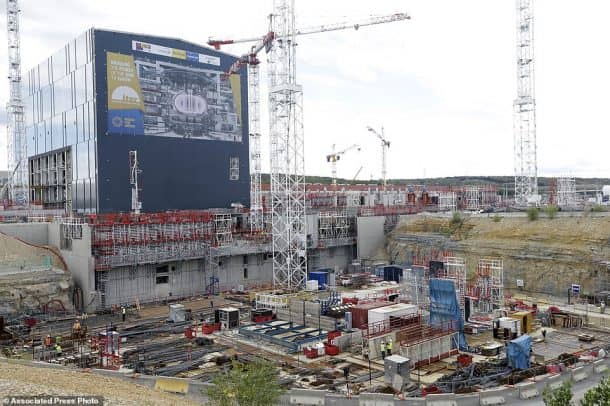
This is the most complex science project in the history of mankind. The hydrogen plasma will be heated to 150 million degrees Celsius. This is ten times the temperature of the core of the Sun and will enable fusion reaction. A donut-shaped reactor called tokamak is built specially for the process and the whole reactor is surrounded by giant magnets that keep the ionized plasma in a confined state and away from the metal walls.
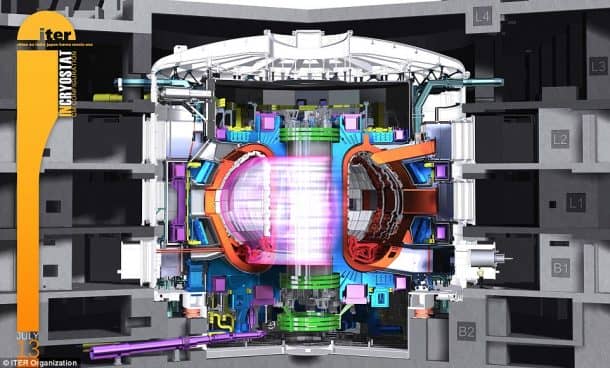
These superconducting magnets must be cooled to a temperature of negative 269 degrees Celsius, the same as that of interstellar space. Scientists have been trying to replicate the fusion process taking place on the sun for a long time now and there is no risk of an uncontrolled chain reaction with this as in the case of fission reaction as fusion does not produce long-lived radioactive waste.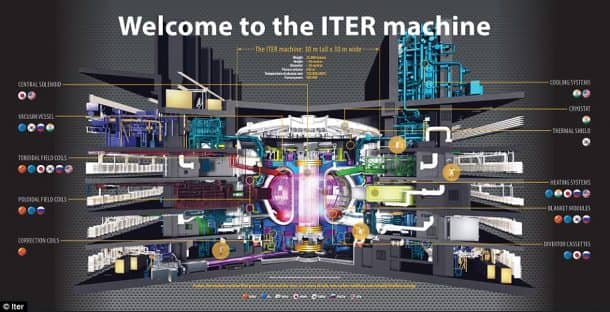
The joint project was proposed in 1985 by the US President Ronald Reagan and Soviet leader Mikhail Gorbachev. The work did not start for more than 20 years and finally, the site was chosen in France in Saint-Paul-les-Durance, about 50 kilometers northeast of Marseille.
China, the European Union, India, Japan, South Korea, Russia and the United States are among the members of the combined project and have decided on the details of the project together. ITER won’t generate electricity but scientists believe that it will produce more energy than it consumes. There are other fusion devices as well but this is the most advanced and practical project to control nuclear fusion. Testings and upgrades are underway, and the scientists won’t know if it is working to their expectations or not till 2035.
Many rocket scientists have been recruited in the ITER team and are using techniques used in building launcher and satellite components to build the constructing rings to support the powerful magnetic coils inside the machine. CASA Espacio is a Spanish company and is using a technique it has perfected over two decades to build the components of ITER.
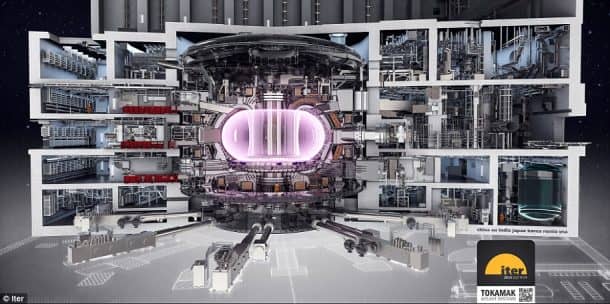
The ITER team claim a technique for building launcher and satellite components has turned out to be the best way for constructing rings to support the powerful magnetic coils inside the machine. “Forces inside ITER present similar challenges to space, explains Jose Guillamon, Head of Commercial and Strategy. “We can’t use traditional materials like metal, which expand and contract with temperature and conduct electricity. We have to make a special composite material which is durable and lightweight, non-conductive and never changes shape.”
The final design of the reactor will use 18 massive magnets. One of these magnets being built is reported to be 45 feet long, 30 feet wide, and 3 feet deep. Each magnet weighs between 113,400 to 226,800 kg, which is equal to that of a Boeing 747 airplane. CASA Espacio is also tasked with developing a technique to embed carbon fibers in resin to create a strong but lightweight material to hold these magnets. This material is ideal as it is used in rocket launches capable of sustaining extreme temperatures.
Gerald Navratil, a professor of applied physics at Columbia University, said nuclear fusion could help solve the problem of how to reliably produce large amounts of electricity without emitting greenhouse gases. Energy is such an important part of our technological society that expenditure of 20 billion to develop a new energy source is really not out of line,” he said.
The nuclear fusion project is halfway complete and that is a huge milestone. We will get a better idea of how things are going and will get a better idea of the timeline after another decade. You can learn the details of the project in the video below:


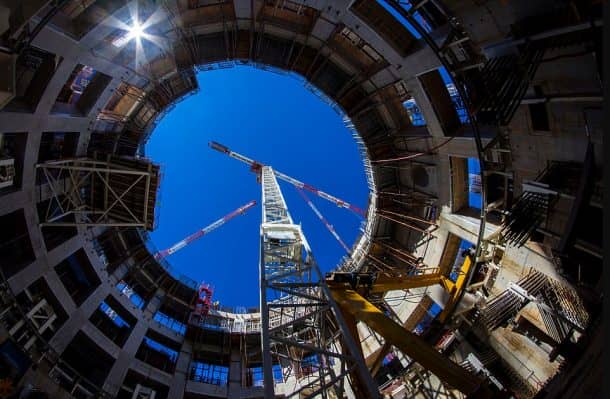

This is amazing, I was blown away when I read that this the most complex science project ever, it’s scale, the degree to which the hydrogen core will be heated, as well as the fact that it will be ten times hotter than the core of the sun. This is indeed a mind blowing project.
ITER definitely not produce more power than it consumes. Don’t confuse the 50MW electrical input required to heat the plasma with the 250MW electrical input required to run the rest of the machine. At best ITER might manage to create 500MW of heat output, which equates to about 200MW of electrical power if converted at an optimistic 40% efficiency. So that would ar best be a 100MW net power loss. Maybe. By about 2050. Using a DT plasma which will render the whole 30,000 tonne machine radioactive and cost further billions to decommission.